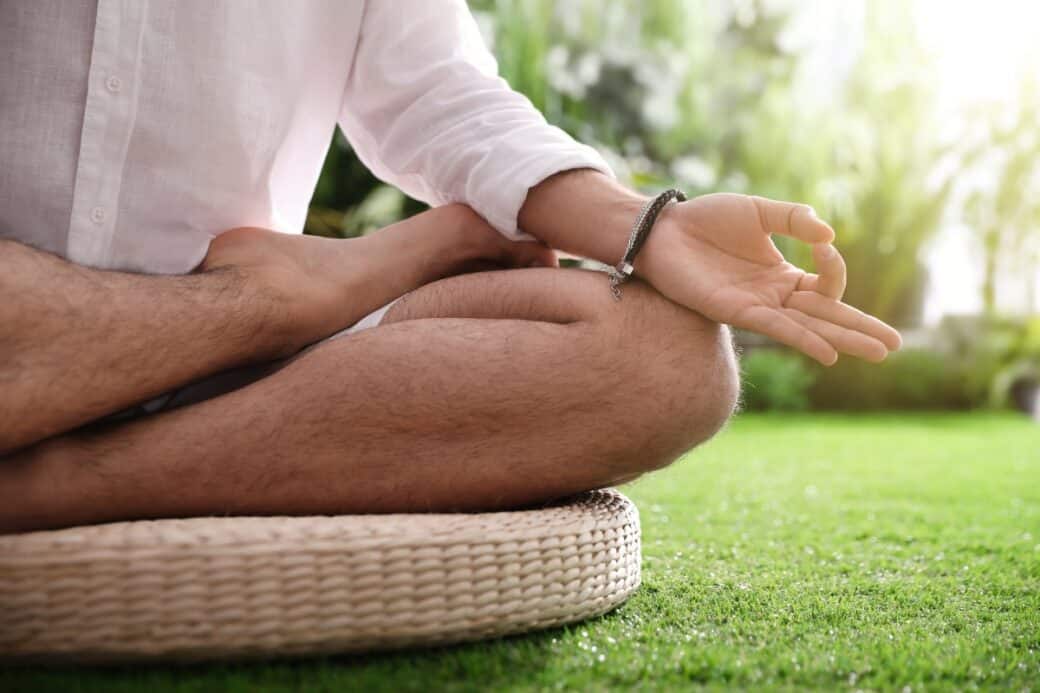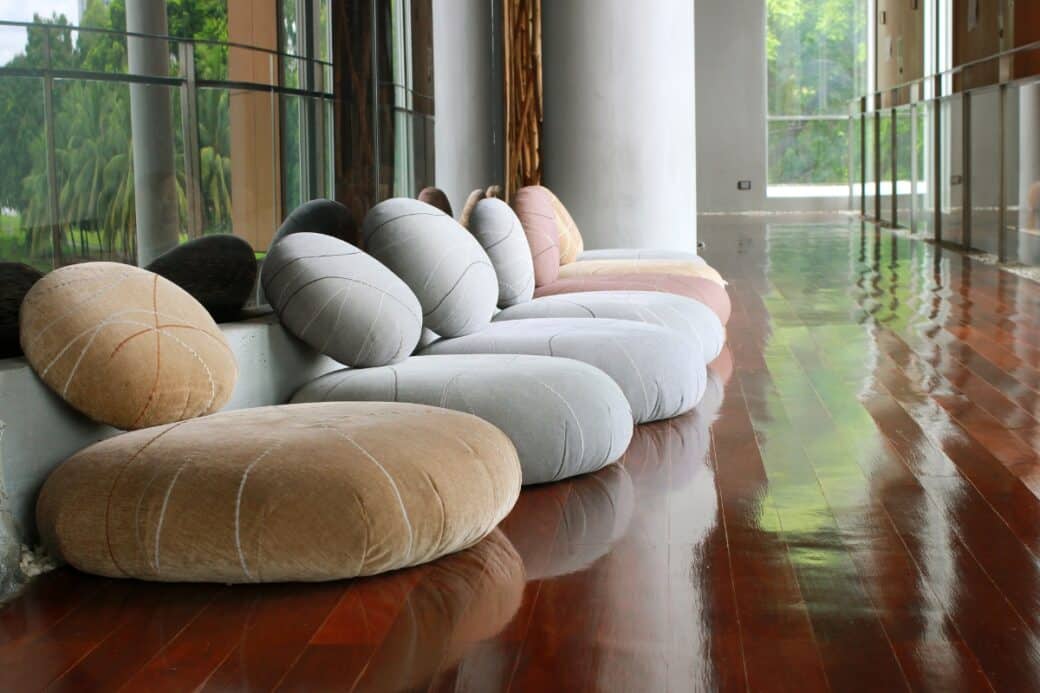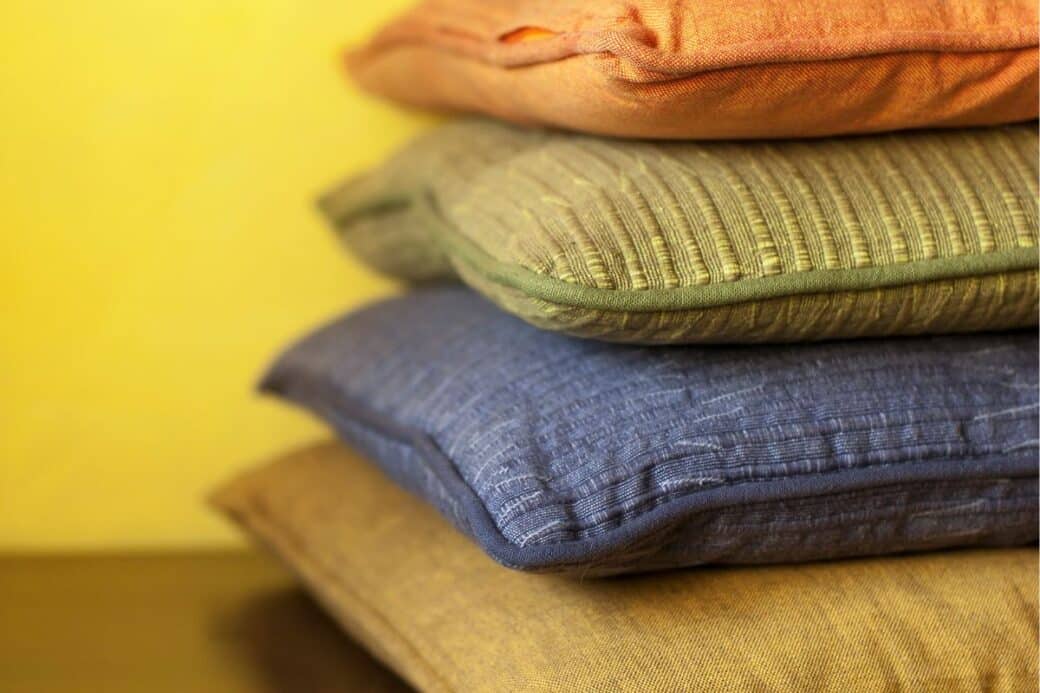Have you ever found yourself struggling to find a comfortable position while meditating? Look no further, as we have the solution for you! In this article, we will guide you on how to sit on a meditation cushion to maximize your comfort. Whether you are a beginner or experienced in meditation, these tips and techniques will ensure that you can fully relax and focus on your practice without any discomfort or distractions. So, grab your meditation cushion and let’s get started on enhancing your meditation experience!

How To Sit On A Meditation Cushion: Understanding the Purpose of a Meditation Cushion
Meditation cushions play a crucial role in creating a comfortable and conducive environment for meditation. They are specifically designed to support your body, enhance your posture, and provide stability during your meditation practice. By using a meditation cushion, you can alleviate discomfort, reduce distractions, and allow yourself to fully focus on your mental and spiritual journey.
Importance of using a meditation cushion
Using a meditation cushion is essential for maintaining a good posture during meditation. Sitting on the floor or a hard surface without support can cause strain on your back, hips, and legs, leading to discomfort and potential injuries. A meditation cushion provides the necessary elevation and cushioning to ensure that your spine remains aligned and your muscles feel relaxed. This is crucial for achieving a deep state of meditation and for preventing any physical discomfort that may hinder your practice.

Role of a meditation cushion in maintaining good posture
Maintaining good posture is key to a successful meditation practice. A meditation cushion helps you sit in an upright position with a natural curve in your spine. This alignment allows for proper circulation, prevents muscle strain, and promotes deep and focused breathing. Good posture not only enhances your physical well-being but also supports your mental clarity, allowing you to fully immerse yourself in the meditation experience.
Impact on comfort and duration of meditation
Comfort is essential for extended meditation sessions. Without proper support, you may find it challenging to sit for extended periods of time, and discomfort can quickly become a distraction. A meditation cushion enhances comfort by providing a soft and supportive surface for your body. By reducing physical discomfort, you can prolong your meditation sessions and delve deeper into your practice, leading to a more fulfilling and transformative experience.

Choosing the Right Meditation Cushion
Selecting the right meditation cushion is a personal choice that depends on various factors. It’s important to consider your body type, flexibility, and specific needs when choosing a cushion that suits you best. Here are some factors to consider:
Factors to consider while choosing a cushion
Consider factors such as the cushion’s height and firmness. A cushion that is too high or too soft may not provide the necessary support, while one that is too low or too firm may cause discomfort. Additionally, think about the cushion’s durability, portability, and maintenance requirements to ensure it meets your long-term needs.
Shapes and sizes of meditation cushions
Meditation cushions come in various shapes and sizes to accommodate different body types and sitting preferences. Zafu cushions are round and provide height, while zabuton cushions are rectangular and offer added cushioning for your legs and knees. Experiment with different shapes and sizes to find the one that aligns with your body’s needs and promotes the highest level of comfort.
Deciding on the material of the cushion
The material of your meditation cushion is an important consideration. Cushions are often filled with buckwheat hulls, kapok fibers, or foam. Buckwheat hulls provide firmness and mold to your body shape, kapok fibers are soft and hypoallergenic, while foam cushions offer a balance between support and softness. Choose a material that aligns with your preferences and ensures maximum comfort during your meditation sessions.
Finding the Right Place for the Cushion
Creating an ideal meditation space is paramount for a successful practice. When choosing the perfect location for your cushion, keep the following aspects in mind:
Selecting a quiet and spacious place
Choose a serene and quiet location where you can remain undisturbed during your meditation. This could be a dedicated meditation room, a peaceful corner of your home, or a spot in nature. Ensuring that the space is quiet and free from external distractions allows you to fully focus on your meditation practice.
Ensuring the meditation space is free from distractions
Remove any distractions or clutter from the meditation space. This includes turning off electronic devices, clearing away pets or children, and creating a serene atmosphere. By eliminating external distractions, you can create a peaceful ambiance that supports deep relaxation and concentration.
Importance of cleanliness and organization for meditation space
Maintain a clean and organized meditation space to cultivate a sense of calm and tranquility. Straighten any items in the area, ensure proper ventilation, and incorporate elements such as plants or natural light to enhance the overall ambiance. A clean and organized space promotes a clear and focused mind, allowing you to fully immerse yourself in your meditation practice.

Setting up the Cushion for Meditation
Properly setting up your meditation cushion is essential for ensuring comfort and stability during your practice. Consider the following steps:
Proper placement of cushion
Place your meditation cushion on a flat and stable surface. Ensure that it is centered and aligned with your chosen meditation space. This allows for balance and stability as you sit on the cushion.
Positioning your body prior to meditation
Sit on the cushion with your legs crossed in a comfortable position. Find a posture that allows your hips to be slightly higher than your knees, promoting natural alignment of the spine. Engage your core and relax your shoulders to maintain proper posture throughout your meditation session.
Ensuring comfort before beginning the session
Adjust the cushion as needed to achieve optimal comfort. Make sure your weight is evenly distributed on the cushion and that you feel supported and stable. Take a moment to relax and settle into your seated position before beginning your meditation practice.
Correct Posture for Sitting on a Meditation Cushion
Maintaining correct posture while sitting on a meditation cushion is vital for physical comfort and deepening your practice. Pay attention to the following:
Position of legs
Cross your legs comfortably in a way that allows your knees to be lower than your hips. This helps to create a stable and grounded foundation while reducing strain on the hips and lower back. The lotus position, half-lotus position, or simply sitting with your legs crossed can all provide a stable base for meditation.
Orientation of the spine
Align your spine by gently elongating it from the base of your pelvis to the crown of your head. Imagine a string gently pulling you upward, straightening your back without forcing it. This alignment helps prevent slouching and encourages proper breathing and energy flow.
Hand and arm placement
Place your hands on your lap, allowing them to rest naturally. You can opt to rest your hands on your thighs, palms facing down or up, or clasp your hands together softly. Find a position that feels comfortable and promotes a sense of relaxation and ease.
Maintaining Comfort during Meditation
To enhance comfort during meditation, pay attention to your body and implement the following techniques:
Ensuring relaxed muscles
Scan your body before and during meditation to identify any areas of tension. Focus on consciously relaxing those muscles and letting go of any built-up tension. This promotes physical comfort and allows for a deeper state of relaxation and meditation.
Breathing techniques for comfort
Conscious breathing is a powerful tool for maintaining comfort during meditation. Take slow, deep breaths, allowing your diaphragm to expand fully. Breathe in through your nose and exhale through your mouth, focusing on releasing any physical or mental tension with each breath. This helps to calm the nervous system and deepen your state of relaxation.
Recognizing and releasing tension through body-scanning
Regularly scan your body for any areas of tension or discomfort. During your meditation, purposefully direct your attention to those areas and practice deep relaxation techniques, such as progressive muscle relaxation. This technique involves tensing and then releasing each muscle group, promoting a state of deep relaxation and comfort.
Adjusting the Cushion to Your Body
It’s essential to customize your meditation cushion to fit your body’s unique needs. Consider the following adjustments:
Modifying the cushion height and firmness
Experiment with the height and firmness of your cushion to find the most comfortable setup for your body. Some individuals may require additional height to achieve proper alignment, while others may prefer a softer or firmer cushion to suit their body’s needs. Explore different options until you find the perfect balance of comfort and support.
Adding or reducing stuffing
If your cushion allows, you can add or reduce the amount of stuffing to personalize its comfort level. This allows you to mold the cushion to your specific body shape and preferences. Adding or removing stuffing is a simple and effective way to ensure maximum comfort during your meditation sessions.
The role of external support
In some cases, additional external support may be necessary to enhance comfort during meditation. This can include using a folded blanket or a bolster to provide extra cushioning or support for specific body parts. Experiment with external support options to find the combination that best suits your body’s needs and promotes long-lasting comfort.
Common Discomforts and their Solutions
Several common discomforts can arise during meditation, but with the following solutions, you can address them effectively:
Dealing with leg numbness
Leg numbness is a common discomfort experienced during meditation, especially when sitting for extended periods. To alleviate this, consider shifting your leg position regularly, altering the crossing of your legs or using a meditation bench or stool to provide relief. Stretch breaks during longer sessions can also help prevent leg numbness.
Overcoming lower back pain when meditating
Lower back pain can occur due to poor posture or sitting for extended periods. To alleviate this discomfort, ensure that your cushion provides adequate support to maintain proper posture and alignment. Consider adding external support, such as a rolled-up towel or small pillow, to provide additional lumbar support. Taking stretch breaks or incorporating gentle back and hip stretches into your routine can also help alleviate lower back pain.
Handling shoulder and neck strain
Shoulder and neck strain can result from tension or improper posture during meditation. To relieve this discomfort, consciously relax your shoulders and ensure that they are not hunched or raised. Gently roll your shoulders and stretch your neck during meditation breaks to release any built-up tension. Maintaining proper posture and periodically adjusting the position of your neck and shoulders can prevent strain and promote comfort.
Long-Term Comfort: Transitioning to Longer Meditation Sessions
As you progress in your meditation practice, you may find yourself wanting to extend the duration of your sessions. To maximize long-term comfort, consider the following:
Assessing comfort levels during and after sessions
Pay close attention to your comfort levels during and after each meditation session. Recognize any signs of discomfort or strain and adjust your posture, cushion, or external support accordingly. Regularly check in with your body to ensure that you’re maintaining optimal comfort throughout your practice.
Increasing session durations gradually
When transitioning to longer meditation sessions, gradually increase the duration rather than trying to sit for an extended period right away. This allows your body to adjust and adapt to the increased demands, reducing the risk of discomfort or muscle strain. Slowly building up your session durations over time will help you cultivate endurance and enhance your overall meditation experience.
Sustaining comfort during prolonged periods of stillness
During longer meditation sessions, it is important to sustain comfort through periodic movements and gentle stretches. Take breaks every 30 minutes or so to stretch and shift your body, promoting blood circulation and preventing stiffness. Incorporate gentle movement and mindfulness exercises to maintain physical comfort and mental alertness throughout the session.
Caring for Your Meditation Cushion
To ensure the longevity and hygiene of your meditation cushion, follow these care guidelines:
Regular cleaning to maintain cushion hygiene
Clean your meditation cushion regularly, following the manufacturer’s instructions. You may be able to remove the cushion cover and wash it separately, while the inner cushion can be spot cleaned as needed. By keeping your cushion clean, you not only maintain its aesthetic appeal but also promote a clean and fresh meditation environment.
Handling wear and tear
Monitor your meditation cushion for any signs of wear and tear. Check for loose threads, frayed edges, or flattened cushioning. Repair or replace the cushion as needed to maintain its supportive properties and ensure your continued comfort during meditation.
When to replace your meditation cushion
Over time, the cushioning material can lose its shape, firmness, and support. If you notice that your cushion is no longer providing the comfort and support it once did, it may be time to replace it. Investing in a new cushion ensures that you can continue to enjoy the benefits of meditation without compromising your physical well-being.
In conclusion, a meditation cushion is a valuable tool for enhancing comfort and maximizing the benefits of your meditation practice. By understanding the purpose of a meditation cushion, choosing the right one for your body and preferences, and properly setting it up, you can support good posture and maintain comfort during meditation. Taking care of your cushion and addressing any discomforts that may arise will allow you to transition to longer meditation sessions and reap the long-term benefits of a regular practice.




